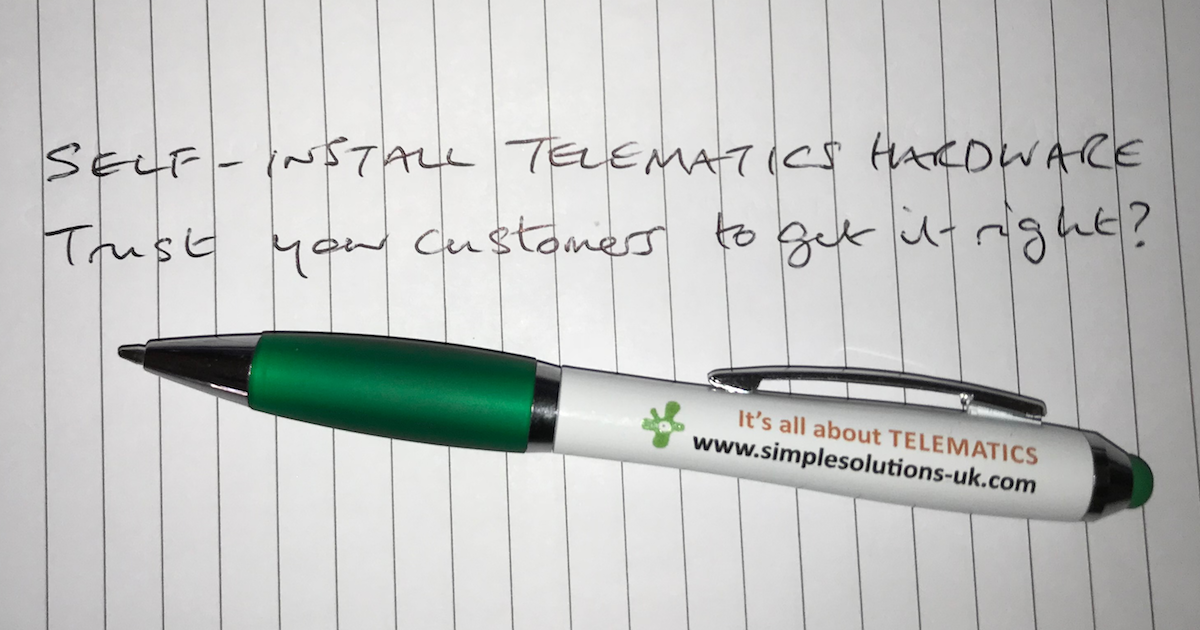News & Blog
Telematics: Se;f Install Hardware

Self-install, taking the cost out of install, or more trouble down the line?
With tracking, at the end user level, becoming more and more competitive, integrators are looking to save cost where they can, a simple and quick method is to take installation costs out of the equation by asking end users to install themselves by a number of easy install options.
Additionally, there are other advantages of the self-install model in that, generally, the device is more portable and therefore can be quickly and easily transferred to other vehicles when needed. So, if you trust the end users to follow simple instructions, if the devices are fool-proof and once installed if they can be reliable then this might be an optional solution for you or your customers.
There are a number of products that offer the ease of self-install and we’ve tried to break down the main groups and give the pros and cons for each, remembering that this is just our view and an unbiased review of what we’ve seen and heard from our client base and our own evaluation testing.
OBDII Socket
The use of the OBDII plug in device was well covered in one of our previous blogs (here) but to summarise:
Pros:
- Simple to install
- Robust
- Wide range available
- Well supported within Cars, Vans and LCV’s
Cons:
- Position of OBDII socket – either extension cable needed (with some form of mounting)
- end user guidance needed (for position in specific vehicle etc.)
- easily removed (accidentally or deliberately)
Battery Strapped (connected to battery terminals)
Device is supplied with two terminal cables colour coded to fit directly to the vehicle battery. Widely used by the insurance market, therefore widely tested, robust and proven.
Pros:
- Cost effective
- Widely used & tested
- Fit and forget
Cons:
- Install, some end users unsure when it comes to spanners/screwdrivers
- Easily spotted and removed
Cigarette/Accessory Socket
There are a number of devices that simply plug into the cigarette lighter or accessory socket, either directly or via a short cable.
Pros:
- Very simple install and generally visible (LED’s etc.)
- Widely used socket (supported in many vehicle types)
- Ideal for switching between vehicles (link to driver rather than vehicle?)
Cons:
- Due to the way it’s powered journey start and stops could be missed
- Very easily removed or dislodged
- Not always the most convenient location
Windscreen Mounted Battery Powered
USB charged battery device that mounts to the vehicle windscreen giving a visual indication of operation and warning when charge needed.
Pros:
- Securely mounted to windscreen (inside cab)
- Elegantly designed (designed to be seen)
Cons:
- Limited battery life
- Users forget to recharge (via in-situ plug in cable)
- Higher cost of device
Battery Powered
A varied of battery powered devices, rechargeable or single use, designed to be covert once placed within the vehicle and used as either temporary or secondary tracking (hire cars etc.). Generally fitted by the asset owner, rather than the end user.
Battery life, depending on reporting rate and use case, can vary between days and years.
Pros:
- Cost effective
- Discrete
- No external power needed
- Reusable (either recharge or replace battery pack)
Cons:
- Battery life (depending on use case)
- Positioning can be problematic (due to discrete requirement)
- Easily discarded if found